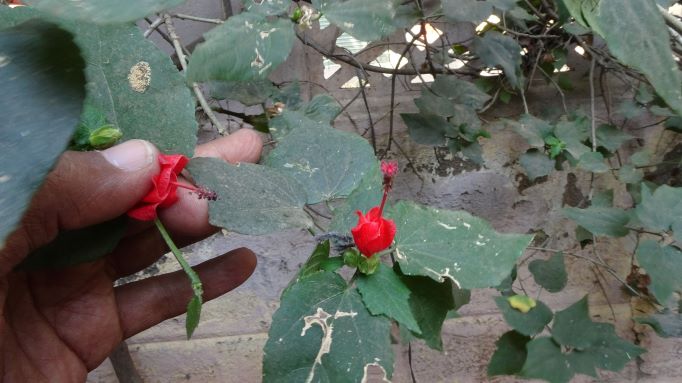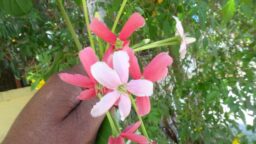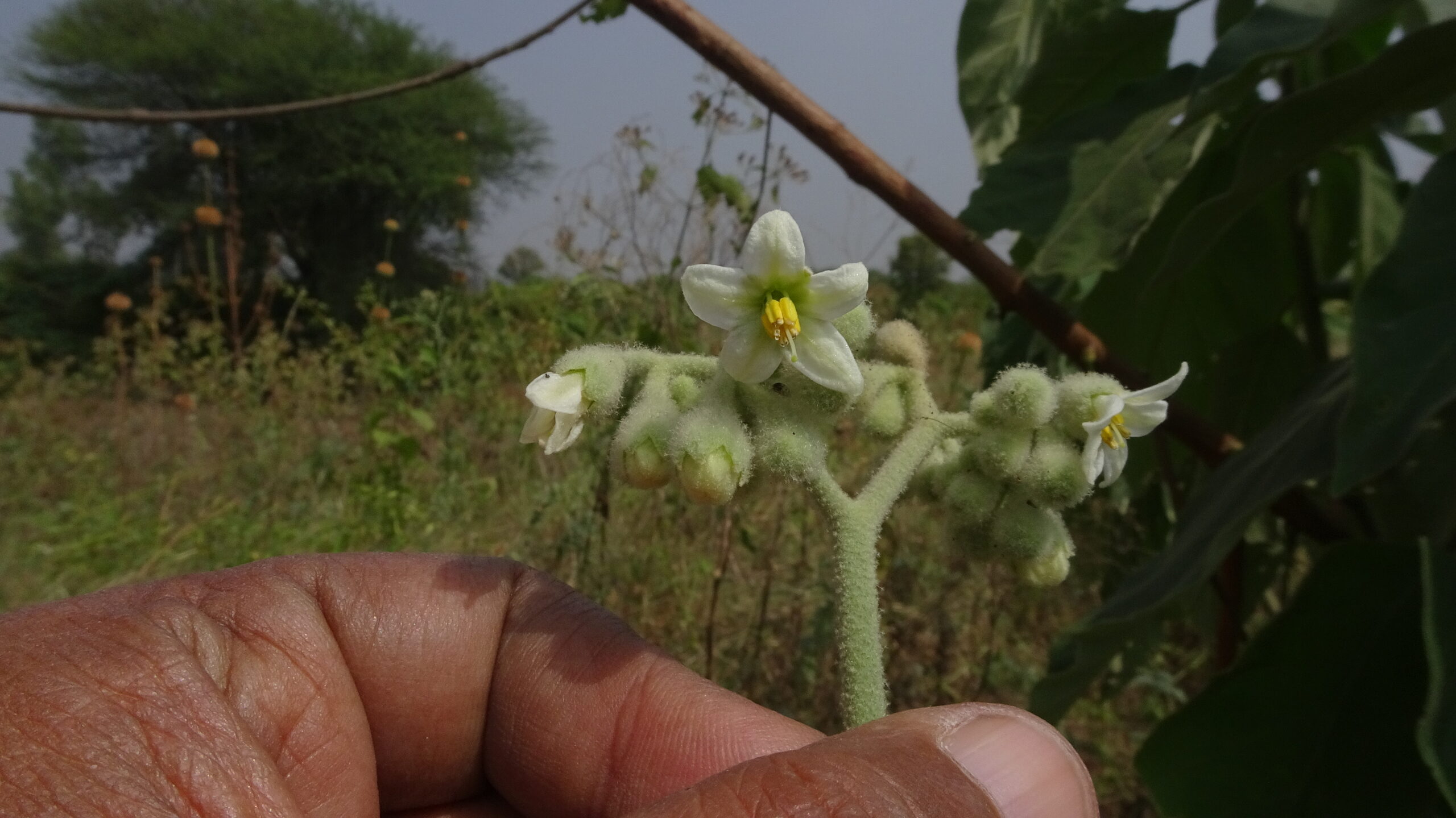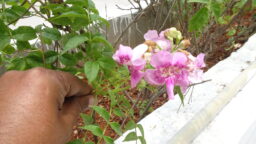
Common Name: Sleeping hibiscus, Turk’s cap.
Sleeping hibiscus is shrub (1 meter high) of South American origin often planted in India as an ornamental plant. The plant has red colored hibiscus like flower, but the flower never opens up fully and face downwards. The leaves are simple and arranged in an alternate manner; the leaf margin is gently serrate. The leaf stalk and leaf measure around 3.7 cm and 9.6 cm respectively. The leaf shape is ovate; leaf base cordate and apex acuminate. Some leaves are gently three lobed. The upper surface of the leaf is dark green in color and glabrous; the lower leaf surface is light green in color and tomentose. The flower stalk and flower measure around 5 mm and 3 cm respectively. The epicalyx has 6-8 lancelolate green shaped segments measuring about 9 mm. The calyx measure nearly 1 cm and have five sepals segments which are united below. The flower consists of five separate red colored petals which are obovate in shape and measure around 2.5 cm in length. The central column of the flower bears the stamens and pistil. Only a portion of pistil is extends out of the flower the rest is enclosed within the petals. The fruit is in the form of a flat cylindrical capsule (1.5 cm long) enclosing five seeds. Sleeping hibiscus is used as an ornamental plant. Sunbirds often visit the flower for its nectar.




